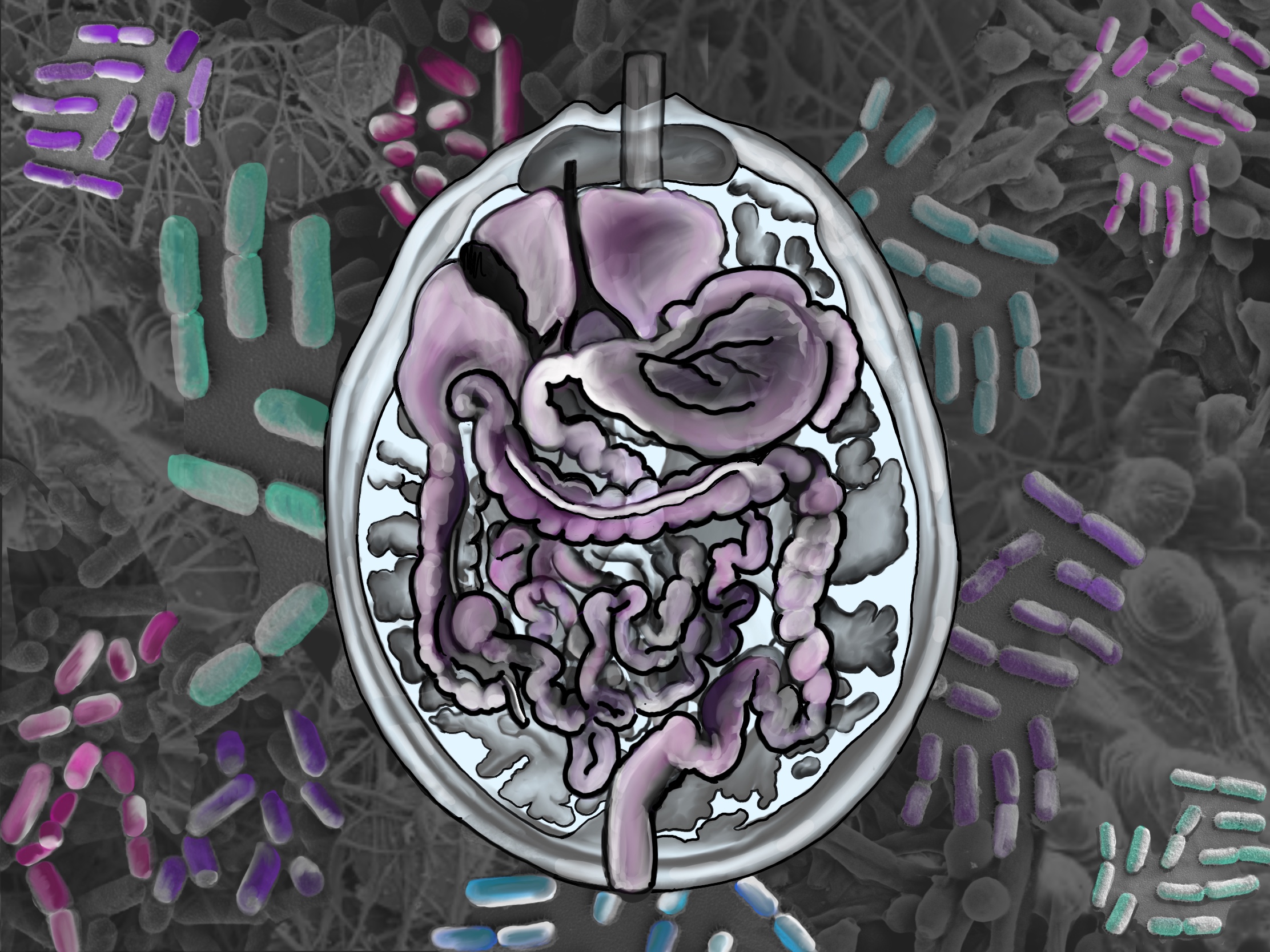“What is its name? Can I pet it?”
“That wasn’t the right response,” I thought to myself, my hands sweating inside my blue nitrile safety gloves. But instead of saying anything, I just smiled back at the volunteer, who by this point was far too enamored with the test animal to pay attention to instructions from me.
And the animal in question?
A palm-sized, three-ounce adult tarantula.
Surprised? Well I was, too. This was meant to be an experiment on fear and anxiety, and my eight-legged lab partners were supposed to help us understand how those emotions work by eliciting them from volunteers.
Of course, as I learned that day, nothing in an experiment ever goes exactly according to plan…
Still, it was strange that I was getting this many volunteers who seemed unafraid of my test animals. The fear of spiders is called arachnophobia, and it is the most common fear among humans. Around 5% of the human population have this phobia, and in a study run by Graham Davey at City University London, 75% of the people interviewed were at least somewhat afraid of spiders.
So what exactly was I trying to test with this experiment? Long story short, I was trying to see how fears could affect how humans make decisions, and perhaps use the findings to come up with practical ways to use our emotions to guide our own decision-making.
Let’s say that someone is afraid of spiders: Could money incentivize them to kiss their fears goodbye and touch a spider? Or, in the reverse sense, could the presence of a spider impede them from collecting money? We were interested in investigating how fear could control a person’s decision-making.
In the Mobbs Lab, we constructed large black boxes with holes that allowed people to stick their entire arms into them. We then placed Easter eggs that represented different amounts of award money within those boxes. During each trial, the subject would reach their arm into a box and try to collect as many of the four Easter eggs as they could. The caveat? There was a 25% chance the box had a tarantula in it, acting as a stimulus to induce fear and stopping people from collecting all the eggs.

The “black boxes” constructed by the Mobbs lab.
Illustration by Julie Inglis for Caltech Letters
When I first toured the lab, the members showed me the tarantulas, which were alive, awake, and ready to scare their next subject. As a proud member of the 75% that feel mildly uncomfortable with spiders, I shivered as I saw them stretch their legs out and zip around in their cages. Lab members showed me how to handle them: they noted that wearing lab gloves was important, and they even fed the tarantulas live crickets. They told me about not only the spider experiments, but also other experiments, including one where the fear stimulus was in the form of a haunted house with actual electric chairs, cockroaches, and rooms designed for suffocating visitors.
It was a once-in-a-lifetime opportunity to work on these experiments. I knew that I wanted to be a part of cool experiments where I could handle tarantulas and use them to scare subjects, and see how their fear could affect how they act. Usually, labs performing psychology and neuroscience experiments on human subjects have resorted to using fake stimuli for convenience. For example, in past experiments looking at arachnophobia, subjects were simply shown images of spiders on a flat computer screen.
Later, I learned that the lab wasn’t working with real stimuli just because it sounded cooler than using fake stimuli. Looking at an image of a spider simply does not engage the same brain areas and fear pathways in the brain as actually interacting with a moving, real-life spider. Two behavioral scientists at Caltech, Professor Colin Camerer and Professor Dean Mobbs, contended in a 2017 paper that using real stimuli is important for obtaining meaningful experimental results when studying fear.

Real versus fake stimuli.
Illustration by Julie Inglis for Caltech Letters
In addition to using realistic stimuli, we designed mini questionnaires that we gave the subjects before each “spider box” trial, in which we asked how many eggs they were planning on collecting and how anxious they felt, since anxiety is the feeling that you experience before a fear-inducing event. After each trial, we would ask the subject to rate the fear they had felt while collecting eggs. Along with those questionnaires, we planned to take an automated, constant stream of objective biological measurements of the subjects during each trial. One measurement was a subject’s sweat level, taken using a Fitbit-like gadget at the subject’s fingertips. Another measurement was the blood flow in a subject’s face, computed using computer vision techniques on video recordings taken throughout the experiment.
I worked with the team to advertise the research study and recruited an initial fourteen volunteers to come into our lab to undergo the experiment.
To thoroughly assess our volunteers’ fear of spiders, I gave them thick packets of questionnaires to fill out, including the Spider Fear Questionnaire (SPQ) and Fear of Spiders Questionnaire (FSQ) when they first entered the lab. After that, I led the volunteers into the experiment room for them to undergo the experiment. It was at this point when some volunteers would make comments that revealed how eager they were about meeting the spiders! It was clear that they would be willing to stick their hands into the boxes just for the opportunity to pet the spiders, even if the boxes didn’t contain any money.
In a final survey after the volunteers underwent the experiment, we asked them what their strategies were for grabbing the Easter eggs from the box. I had naively prepared myself to read about strategies to dodge the tarantula. Instead, I ended up reading about the strategies that they used to help protect the spider from their hands, such as by curling their fingers to stop themselves from poking the spider.
Naturally, every subject managed to pick up all the Easter eggs and thus the maximum amount of money from each box. And what I found when I took a close look at the results of the spider fear questionnaires was that none of our volunteers were actually arachnophobic, confirming my suspicions.
Although none of my study participants were fearful enough of spiders to be classified as arachnophobic, some subjects did show signs of mild fear. One person jumped up when they felt their hand had rubbed against the spider when their arm was in the box.
Even though there was some variation among the fear scores, we couldn’t find a relationship between the amount of money people collected and the spider fear scores; the subjects who had the lowest fear scores and the subjects who had the highest fear scores collected the same number of Easter eggs – all of them. And although we had also eagerly collected reams of physiological data, like sweat levels and blood flow, we couldn’t correlate the number of eggs collected with any of it either.
This was a great example of self-selection bias, where those who volunteer to participate in an experiment don’t reflect the general population and lead to skewed results. In my case, those who were less prone to be fearful of spiders were more likely to sign up for the experiment. Not having any arachnophobic people in our volunteer pool became a huge obstacle to eliciting findings from our study.
But we weren’t done just yet.
Remember those mini questionnaires we painstakingly issued before and after each trial? It turns out there were patterns within them!
By simply looking at the survey data we had collected both before and after each trial, we could see if the levels of anxiety and fear that each subject experienced had changed over time, over all the trials.
First, we looked at anxiety, which was the fear that subjects felt before reaching their hand into the box. We found that it decreased the more trials the subject participated in, which could mean that if you repeat a scary action over and over again, you could feel less anxious about performing the action the more you’ve done it before.
Meanwhile, our surveys also revealed that fear during egg collection stayed the same over all the trials. This meant that the actual feeling of fear did not change with the amount of egg-collecting experience a subject had.
Our findings show that although we failed to answer our question of how fear could affect decision-making because of selection bias, we could still find meaningful patterns of anxiety and fear even among people who do not have very high levels of fear.
A similar analysis on the physiological measurements that we took could teach us something about how the levels of blood flow or sweat changes between trials as well. The next step we have planned is to take a look at our biological measurement data and find out!
What are some practical applications of understanding how anxiety and fear work in humans? It turns out that there are quite a few! For instance, if we understood better how strong emotions influence how we make decisions, we might be able to create tools that trigger specific emotions within us and help us perform better decision-making.
In the spider experiment, I wanted to see how fear could deter people from collecting monetary rewards. This didn’t work out perfectly since all of our volunteers were undeterred, but we still found out about how repeated exposures to fear-inducing stimuli could affect fear and anxiety.
This finding could be extended to people with higher baseline levels of fear, and this fact could help us with coming up with tools that help people with decision-making.
Since doing this experiment, I have tried to apply my learnings to help with my own decision-making. To reduce the time I spent on my phone on entertainment such as social media and YouTube, one day I decided to change my phone background to a picture of holes. Since I have mild trypophobia, the fear of holes, every time I wanted to turn on my phone that day, I was too scared to do so. Unfortunately, it made me scared of using my phone even when I really had to for non-entertainment purposes, so I changed the phone background back to what it was originally by the end of that day.
Clearly, we still have a long way to go before the lessons learned from this study can be used for practical applications! But I am confident that continued research into the complex nature of fear could one day yield deep insights into human behavior, allowing us to better understand and control our decision-making in the real world.




